Cymbopogon citratus
The first time I harvested lemongrass in Virginia, I was invigorated by its refreshing, citrusy fragrance. It sure provided a nice contrast to the fall greens and roots I was harvesting from the fields.
Lemongrass is an herb used in the kitchen for its citrus flavor and scent. It’s native to the tropics, so it does require some protection from the cold. Besides that, it is fairly easy to grow.
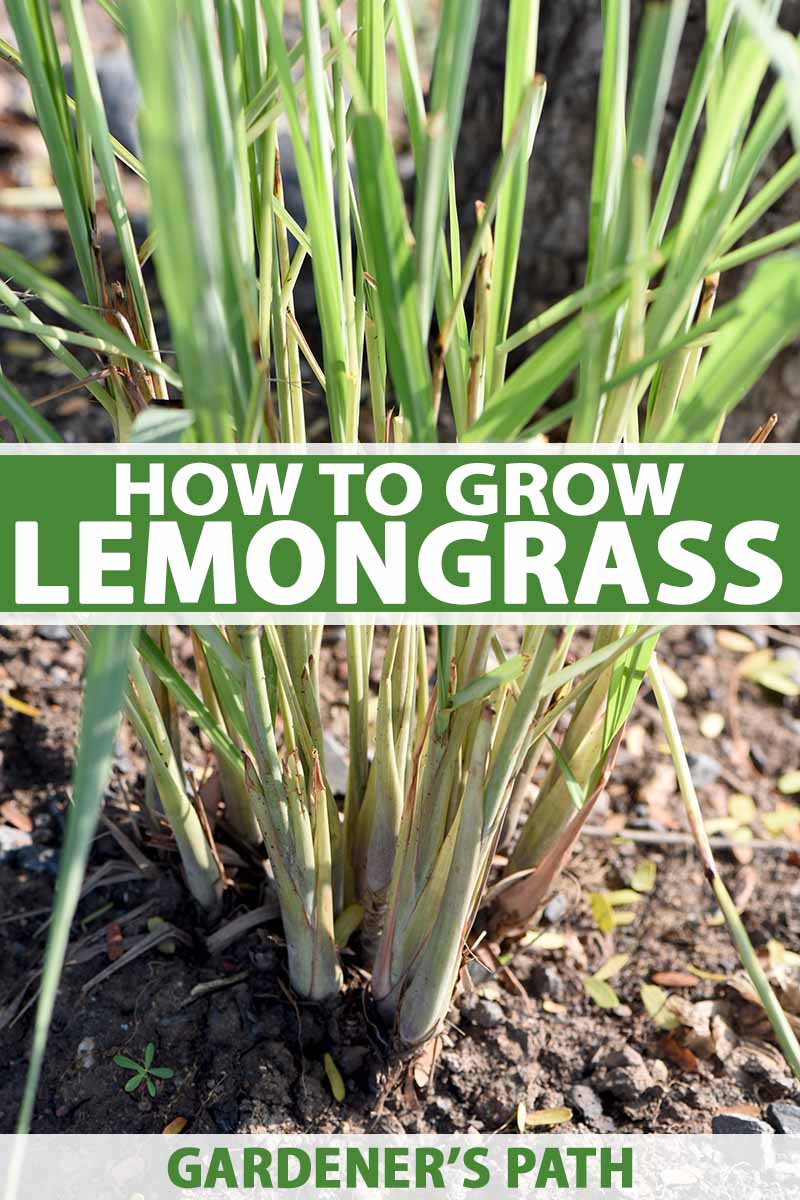
We link to vendors to help you find relevant products. If you buy from one of our links, we may earn a commission.
Keep reading to learn how you can grow it in your garden.
What You’ll Learn
What Is Lemongrass?
Lemongrass is a tender perennial grass in the Cymbopogon genus.
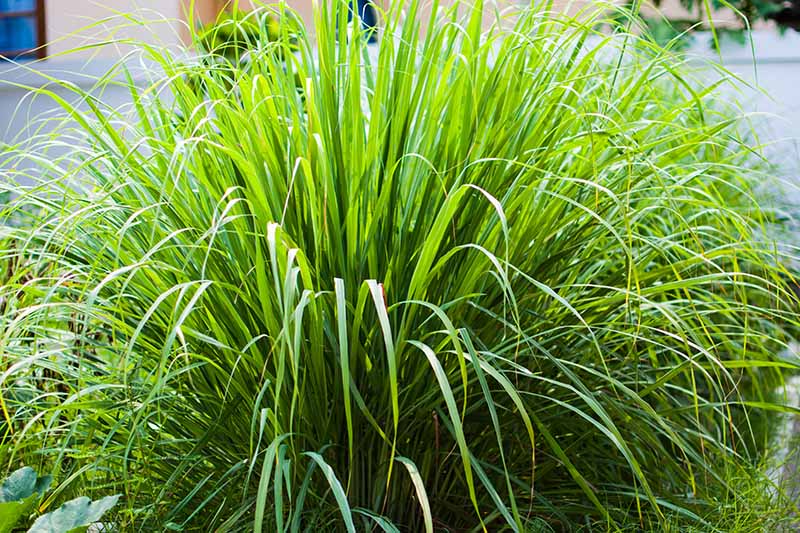
Since it’s native to the tropics, this herb only survives as a perennial outdoors in plant hardiness Zones 10 and 11. If you live in Zone 9 or below, you can keep it perennial by bringing it inside during the winter.
When people say “lemongrass,” they may be referring to a number of different species. These include West Indian lemongrass (Cymbopogon citratus) and East Indian lemongrass (C. flexuosus). Both of these species have an aromatic citrus scent and are used for culinary purposes.
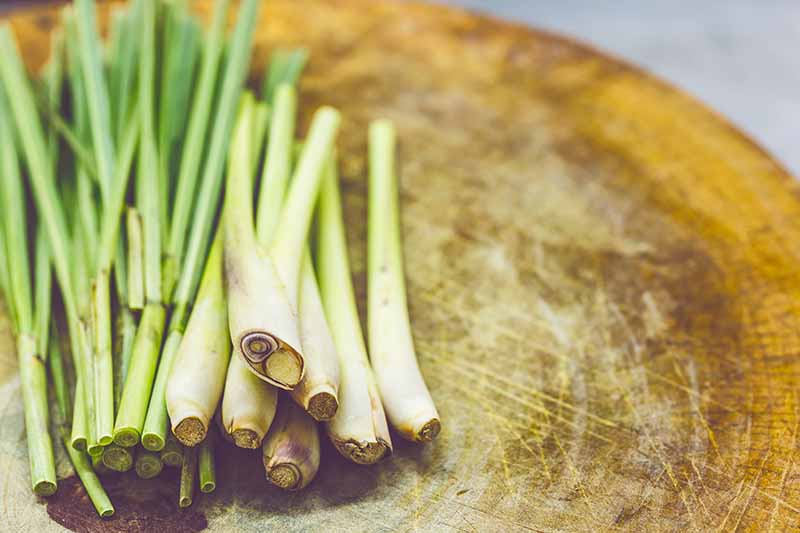
Other closely related species are C. nardus and C. winterianus. These two are both types of citronella grass, which can deter pests in the garden, but are not generally used in the kitchen. Their scent is more grassy and musky than that of lemongrass.
Lemongrass grows in a clumping habit, with multiple stalks emerging from the same base. It can grow up to five feet tall with a spread up to four feet wide.
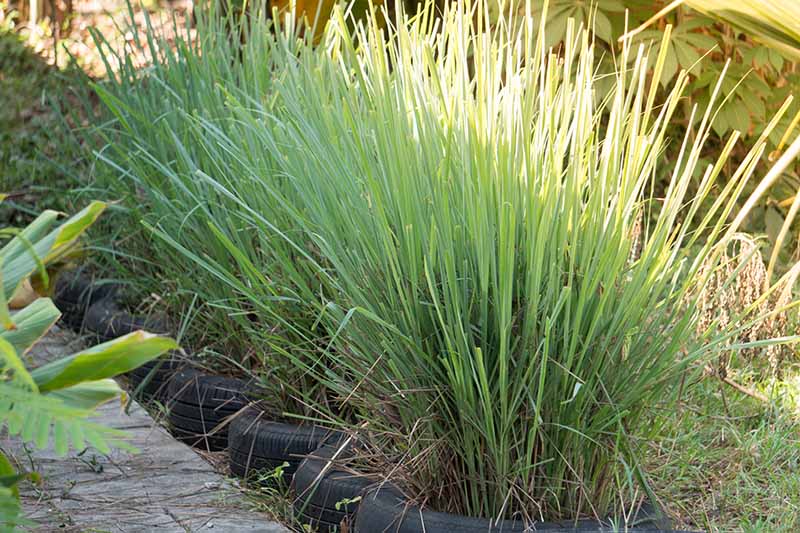
The plant’s upright arching shape and attractive green leaves will add interest and texture to your garden.
This herb is used in many cuisines for its edible, aromatic leaves and stalks. Both have a strong citrus scent and a flavor reminiscent of lemon (hence the name!).
Both the leaves and the stalks are used to flavor dishes such as soups and curries, but as they can be very fibrous, they are usually removed after cooking.
The most prized part of this plant is the stalk’s tender inner core, which develops once stalks grow to be at least half an inch in diameter.
While young stalks consist mainly of fibrous leaves, as they grow larger, the inside of the stalk develops a soft center that can be chopped and added to cooking without needing to be removed before eating.
Cultivation and History
This tropical grass is native to southeast Asia. The Department of Export Agriculture of Sri Lanka reports that the earliest reference to lemongrass oil came from the Philippines in the 17th century.
Apparently this herb was introduced to Jamaica towards the end of the 18th century. Commercial production in the US started in the early 20th century, in Florida.
It is used around the world for both culinary and medicinal purposes. Containing a variety of vitamins and minerals, it is also rich in phytochemical compounds such as saponins, flavonoids, phenols, and alkaloids.

The citrus scent comes from citral, one of the volatile oil compounds which also includes monoterpenes and sesquiterpenes.
People often consume lemongrass essential oil for its antimicrobial properties. According to research published in the Journal of Advanced Pharmaceutical Technology and Research in 2011, the oil can help with sore throats, rheumatism, and digestion issues.
A tea made from the leaves or stalks is also reported to help with gastrointestinal problems, stress, and bladder issues.
In the kitchen it’s most often used in southeast Asian cuisines such as Thai, Laotian, and Vietnamese food, giving them their characteristic citrus tones.
Lemongrass Propagation
You can grow this herb from seed, from cuttings, or by division.
From Seed
If you choose to propagate lemongrass from seed, start in the spring.

To direct seed, wait until all danger of frost has passed. Choose a location with full sun and well-draining, nitrogen-rich soil. Plant individual seeds six inches apart.
Only put a sprinkling of soil over the seeds, as they need plenty of light to be able to germinate. Seedlings can take up to three weeks to emerge, and you’ll need to keep the soil moist during this period.
Once seedlings are a few inches tall, thin individual plants to two feet apart. You can transplant the seedlings you remove to another location if you wish.
If you are starting seeds indoors in seedling trays or containers, plant seeds one month before your predicted last frost date.

If you want to plant in pots, choose one that is at least one foot wide and one foot deep. Lemongrass does spread, so it can quickly fill up the whole container. With its habit of spreading quickly, if you don’t want it to take over your garden, growing in pots is a good way to keep it contained.
Fill containers with nutrient-dense soil and plant seeds six inches apart. Once seedlings are a few inches tall, thin single plants or clumps of plants to one to two feet apart.
To transplant seedlings, wait until they are at least three inches tall and all danger of frost has passed. Plant two feet apart with two to three feet in between rows.
From Cuttings
Cuttings taken from mature lemongrass plants can be rooted for later planting.
To take a cutting, cut the stalk cleanly with a knife about an inch from the ground. This will allow the stalk left in the ground to regrow. Cut off the upper portion of the stalk, leaving only the bottom three to four inches.
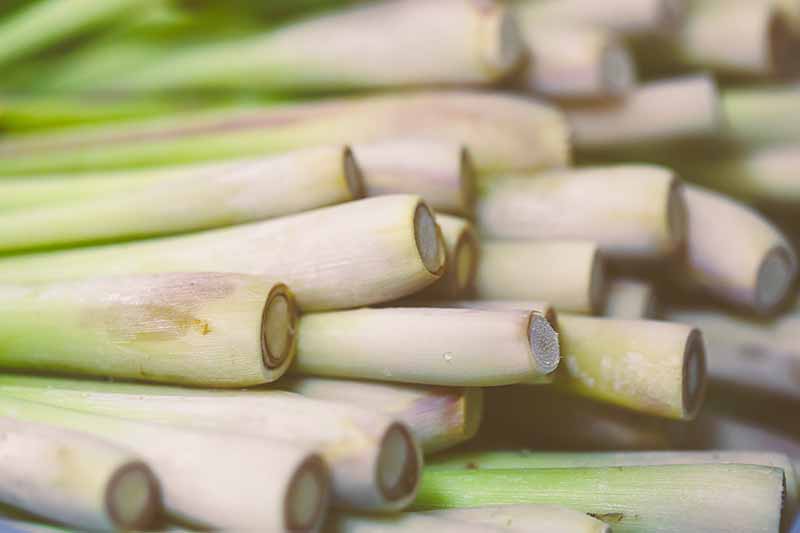
If you don’t have lemongrass plants in your garden, look for it in the produce section of your grocery store. This herb is commonly found in Asian markets.
Cut off the leaves and use them in your cooking, making sure that you’ve got a good three to four inches of stalk, to allow for successful root formation. Don’t cut off any of the bottom portion of the stem. If you do so, it’s unlikely to be able to form roots.
Next, to root your cutting, place it in a cup of water with the base of the stalk submerged. Change the water daily.
The plant will begin forming roots within a week. After two to three weeks, the roots will be large enough to support the plant.
At this point, transplant your lemongrass into well-aerated, nutrient-dense soil in a container or outdoors. Dig a half-inch hole, place the cutting root side down, and backfill around the stem with soil.
You should be able to start harvesting about two to three months after you’ve planted them out.
From Divided Plants
The best time to divide mature perennials is in the spring.
This herb is a clumping grass, meaning it grows multiple stalks from the base. These stalks can be divided and planted in a different location.
To divide, you’ll need to gently separate some stalks from the main clump. One way to do this is to firmly grasp a stalk and pull it until it separates from the rest of the plant. If the roots are very twisted together and tangled, you may need to use a knife to carefully separate them, keeping some roots intact on each stalk for replanting.
Alternatively, you can dig up a whole plant and then separate the stalks with your hands or a knife.
Each division should contain at least one stalk with intact roots.
After separating, plant the divisions one to two feet apart in your desired location. Make sure this area has full sun as well as nutrient-dense and well-aerated soil.
How to Grow Lemongrass
Lemongrass is a tender perennial, meaning it will die back in colder climates. If you live in Zone 10 or above, you can grow it outside in the garden all year round. Once established, it doesn’t need much in the way of attention.
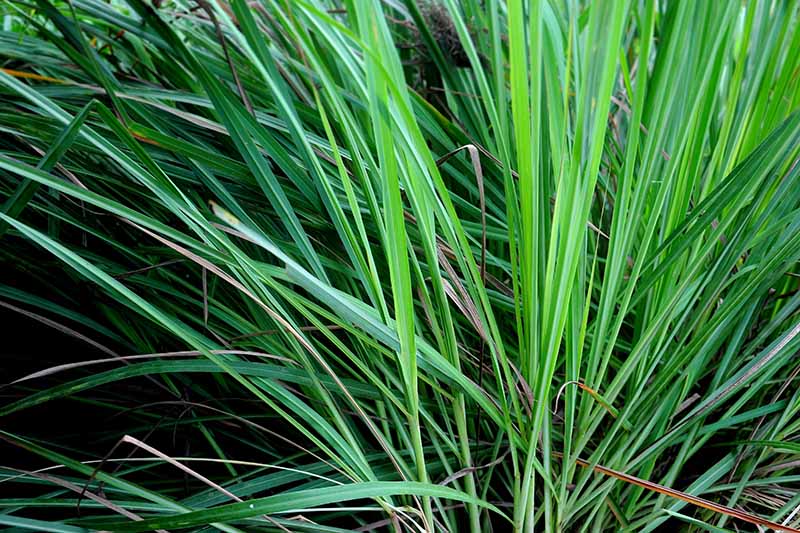
Gardeners in Zone 9 and below will need to protect their plants during winter. The easiest way to do this is to grow it in containers. This way, when frost threatens, you can move your containers indoors to protect them from plummeting temperatures.
Whether you’re growing it in the ground or in containers, lemongrass requires full sun and well-draining, moist soil that’s rich in organic matter.
If you start plants from seed, they will be ready to harvest in 75 to 100 days after sowing seeds.
If you leave the plants past this point, without cutting for harvest they will continue to grow and provide ornamental interest in the garden year-round in warm climates.
With the arrival of frost, they will die back and can be removed and added to the compost pile. If they have enough room, they can expand up to four feet in diameter, so bear this in mind when you choose your location!
Growing Tips
- Give plants plenty of room to spread out
- Protect from frost and cold weather by bringing them indoors.
- Keep soil moist but not waterlogged and in dry areas you can mist the leaves for humidity. If you’re growing in containers, water when the soil is dry to an inch below the surface.
Lemongrass Cultivars to Select
Lemongrass is most often labeled with this generic common name.
When you are looking for plants for your garden, look for C. citratus or West Indian lemongrass. This species is the best for culinary use, thanks to its strong, citrus flavor.
There is only one cultivated variety of this species.
Seeds and plants are available at Burpee.
Managing Pests and Disease
This crop is one of the easiest to grow in terms of pest and disease pressure. Pests rarely attack it as it contains citronella, a natural pest-repelling compound.
Lemongrass Rust
The only real disease threat to these plants is a fungus called lemongrass rust (Puccinia nakanishikii). Symptoms include brown, red, and yellow streaks on the leaves and this usually occurs in excessively damp, moist conditions.
If you spot rust on your plants, prune out infected areas.
To prevent rust, ensure that plants have adequate space between them to allow for proper airflow.
Yellow Sugarcane Aphid
Most pests give this plant a fairly wide berth, apart from one persistent aphid, Sipha flava. This particular pest is yellow and about two millimeters in length. It sucks the sap out of leaves, causing yellow or brown spots.
If you spot this pest on your plant, spray the aphids off with a blast of water or use neem oil or insecticidal soap. You can read more about aphid control here.
Harvesting Lemongrass
The shoots and leaves of the plant can be used for flavoring dishes and for aromatherapy purposes.
The leaves can be harvested once they are about a foot tall. Use scissors or a knife to cut off what you need. When you cut the stalks make sure you leave at least an inch at the bottom if you want the plant to continue growing.

If you want to use the tender core, wait until the stalks are at least half an inch in diameter. If you harvest the stalks when they are smaller, the cores will still be fibrous.
To harvest, use a knife to cut the base of the stalk an inch above ground level. Separate the stalk from the rest of the clump, and repeat until you have as much as you need.
The whole plant can also be pulled out of the ground to harvest multiple stalks. You can do this at any time after the plant is ready to harvest, particularly at the end of the season in colder regions when you know your plants will soon succumb to the weather.
Preserving
Lemongrass freezes well. To prepare the leaves and shoots, cut them into three- to four-inch lengths.
Alternatively, prepare ahead for your favorite recipes by chopping or slicing the stalks and leaves before putting them in the freezer. You just want pieces small enough that they can fit into an airtight container or zip-top bag.

Next, place the pieces in a plastic zip-top bag and into your freezer. They will keep for up to a year.
To use, remove from the freezer, defrost, and cut pieces into the size you need. It can then be used just as you would use the fresh herb.
Learn more about freezing fresh herbs here.
You can also dehydrate the plants. If you live in a dry climate, cut the stalks and leaves into three- to six-inch pieces and place them on a wire cooling rack in a dry location.
The plants will dehydrate in one to two weeks. They are ready when there is no moisture left in them and they feel quite rigid. Discard any plant material that develops mold – this is a sign that your climate or your current weather conditions are too humid to air dry the herbs.
If this is the case, drying in the oven or in a food dehydrator may be a better option for you. Store dried lemongrass in an airtight bag or container in a cool, dry location for up to six months.
To dehydrate, set your oven to its lowest setting (usually warm or around 180ºF), and place three- to six-inch sections of leaves and shoots onto a baking sheet. The plants will dry in two to three hours.
Another option is to dry lemongrass in a dehydrator. You’ll find a roundup of the best models on the market today on our sister site, Foodal.
Learn more about drying herbs here.
Recipes and Cooking Ideas
Lemongrass is used extensively in many southeast Asian dishes. It’s a key component of many curry pastes along with ingredients such as ginger and garlic.
It’s important to note that most parts of the lemongrass plant are added to dishes for flavoring and then removed before consumption. This includes the fibrous leaves and outer stalks. If you harvest from younger plants, they can be chopped finely and don’t need to be removed.

Try using your lemongrass in this spicy and comforting red coconut curry chicken with toasted sesame noodles from our sister site, Foodal.
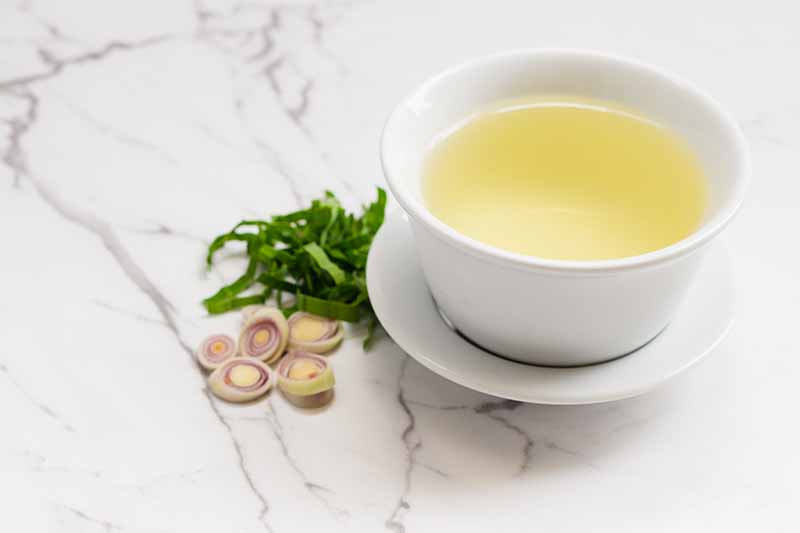
Another great way to use lemongrass is in a refreshing tea. Combine either fresh or dried leaves or stalks with ginger and hot water. Steep for ten minutes, strain, and sweeten to your liking with honey or sugar.
You could try making your own essential oil from lemongrass, although it won’t be as pungent as the aromatherapy oil you can buy. To do this, you’ll need some mature lemongrass stalks. Discard the leaves as it’s the mature stalks that contain the highest concentrations of oil.
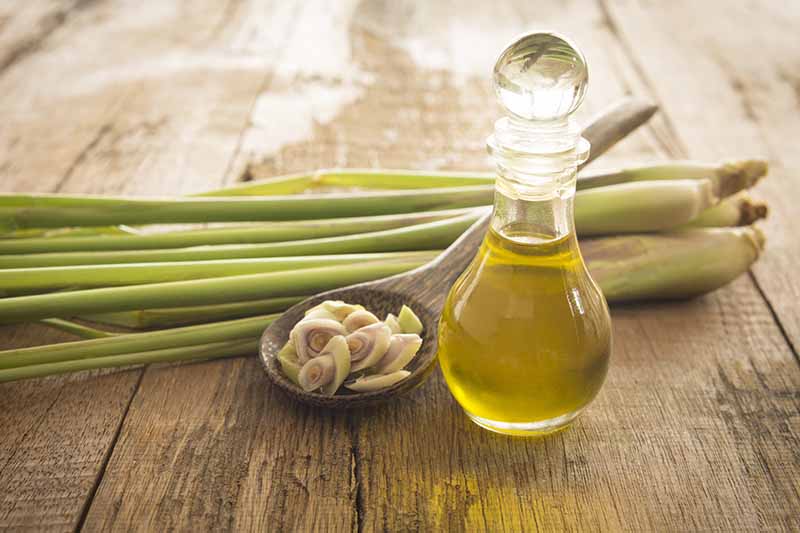
Clean the stalks thoroughly and chop them into half- to one-inch sections. Using a mortar and pestle, gently crush them to release the oils.
Place the crushed stalks into a glass jar and cover them with a neutral carrier oil such as almond or grapeseed.
Secure the lid and shake the jar before placing it in a sunny spot and leave it for two to three days, gently shaking once or twice a day. Strain, then store the oil in a cool, dark place.
Quick Reference Growing Guide
| Plant Type: | Tender perennial grass | Water Needs: | 1 inch per week |
| Native to: | Southeast Asia | Maintenance: | Low |
| Hardiness (USDA Zone): | 8b-12 | Soil Type: | Nitrogen rich, friable |
| Season: | Year round | Soil pH: | 5.5-7.5 |
| Exposure: | Full sun | Soil Drainage: | Well-draining |
| Time to Maturity: | 75-100 days | Companion Planting: | Mint, cilantro |
| Spacing: | 1-2 feet per clump | Avoid Planting With: | Corn, tomatoes |
| Planting Depth: | Surface, for seeds | Family: | Poaceae |
| Height: | Up to 5 feet | Subfamily: | Panicodeae |
| Spread: | 4 feet | Genus: | Cymbopogon |
| Tolerance: | Heat, repels insects | Species: | citratus |
| Common Pests: | Yellow sugarcane aphid | Common Disease: | Lemongrass rust |
An Easy to Cultivate Taste of the Tropics
Lemongrass really is one of the easiest plants to grow, as long as you protect it from the cold. It adds a nice, bright aroma and taste to the kitchen and attractive greenery to the garden.
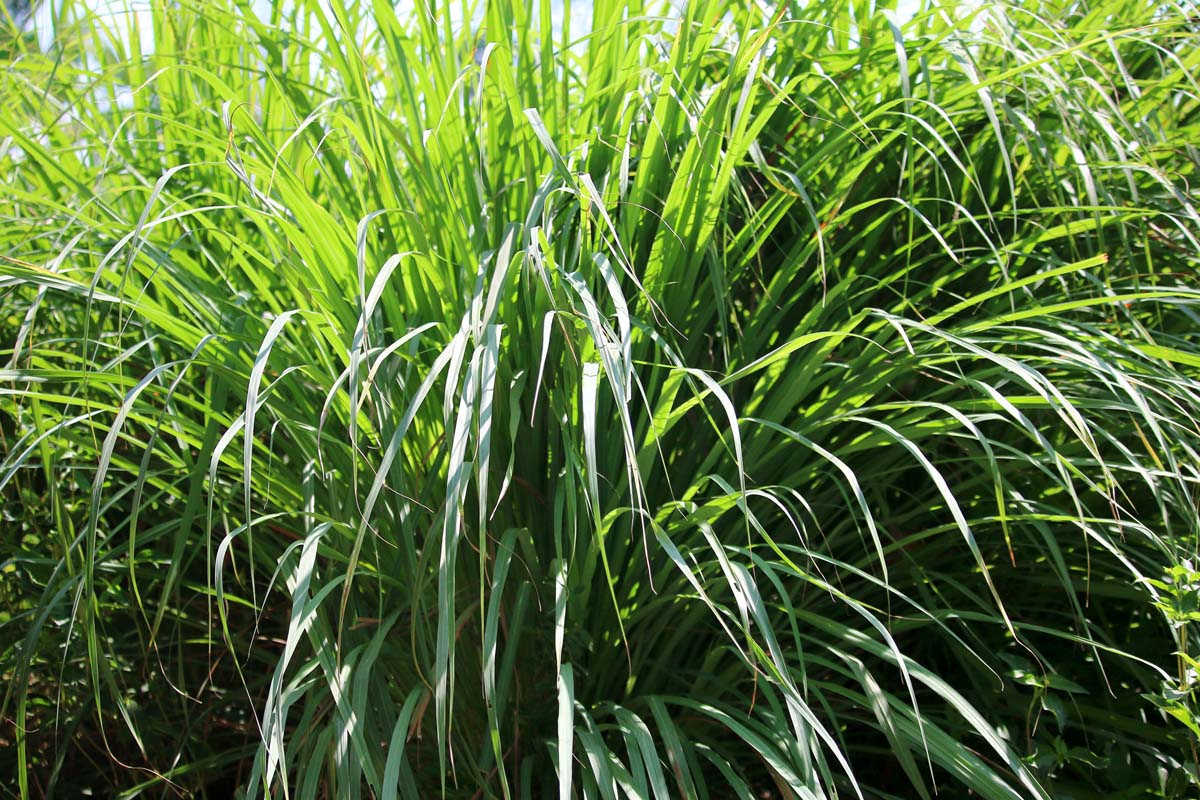
Have you tried growing this herb at home? Let us know in the comments.
And if you’re looking to add other herbs to your garden, check out these growing guides:
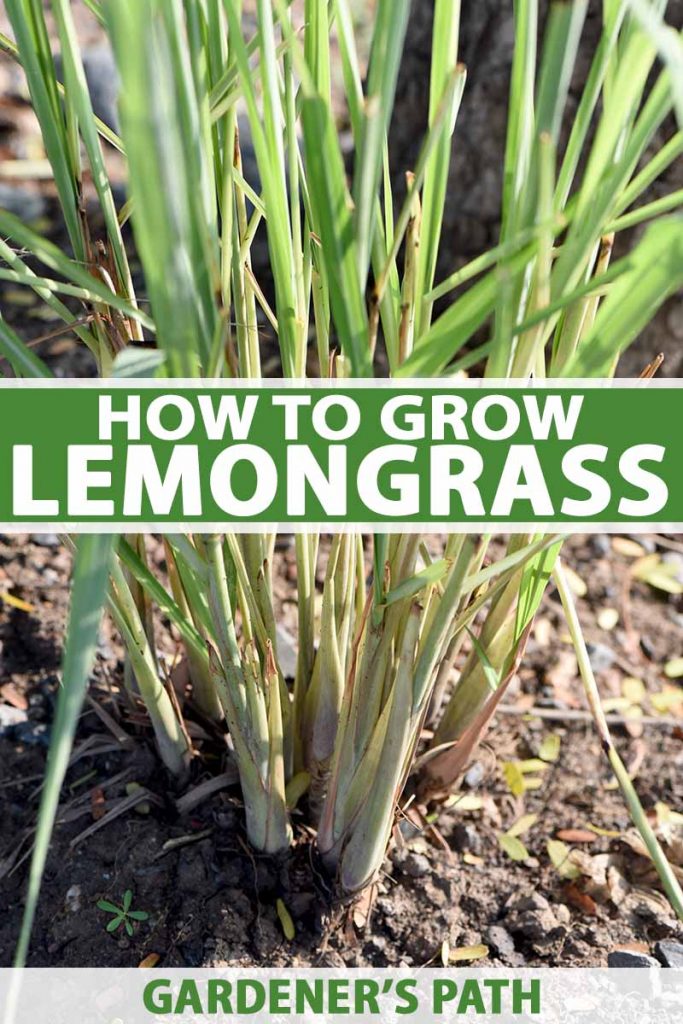
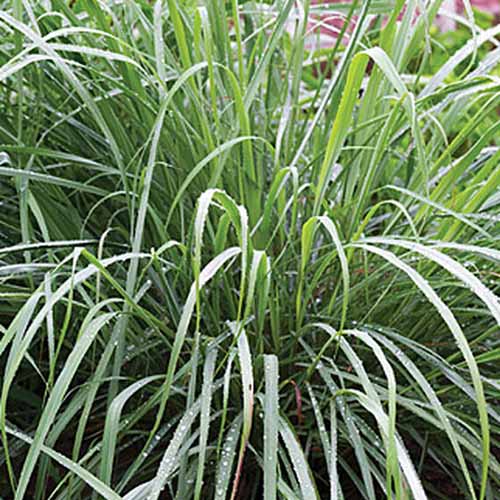
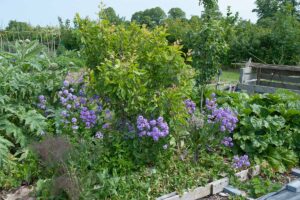
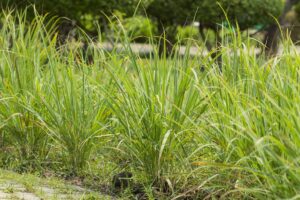

Thank you
I just purchased my first lemongrass plant to add to my patio herb container garden
Love to cook with fresh herbs
I have been growing lemongrass for some time now…I use it when making iced tea.
Hi! I’m just learning and researching about this incredible plant, I have a 1ha plot with drip irrigation system in Pretoria (South Africa) will it be be viable for commercial purposes?
It’s certainly possible to grow lemongrass in South Africa, but your biggest potential concerns are probably going to be periods of extreme rainfall and extreme heat. The soil must be well-draining, and use of shade cloth may be required for protection during periods of hot, dry weather.
I’ve got several stands growing and have been growing it for about 15 years. Here in Florida, it rarely gets cold, so it thrives year-round. I’m makin tom yum goong tonight, so I went out to harvest some and noticed that most of the stalks were smaller than in years past. I think these have reached the end of their lifespan and it’s time for fresh plantings.
Wow, 15 years- that’s great!
Overcrowding could also be the culprit. You might want to dig up and divide clumps, giving them more space to grow. Hope this helps!